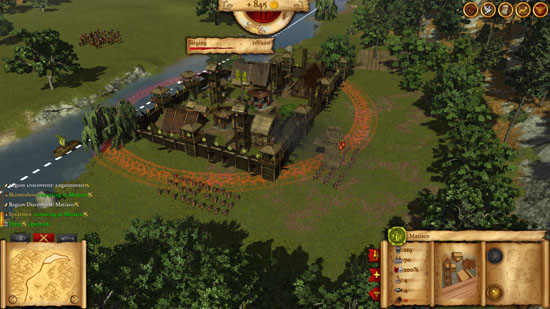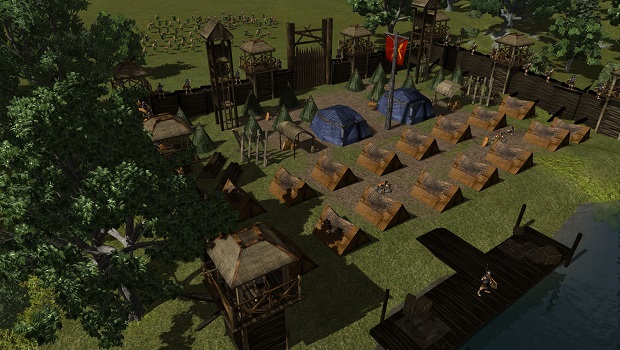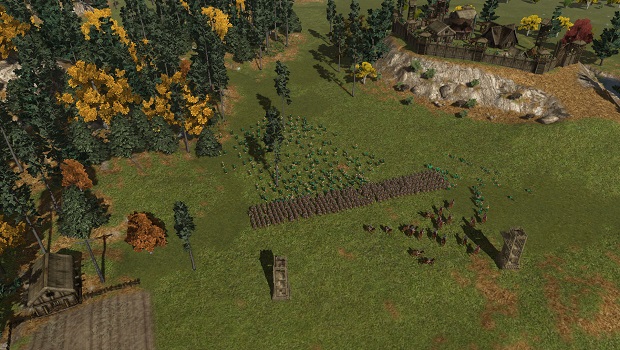There’s an old axiom when talking about military strategy- “amateurs talk about tactics, but professionals study logistics.” Supply considerations are at the forefront of any military campaign, yet games tend to focus on the more interesting portions of warfare: the battles themselves. Details like the battle of Cannae being fought because the Carthaginians were cut off from their water supply or Gettysburg cropping up because of an attempt to requisition some much needed shoes are lost in the shuffle. Still, we all know that logistics are important, and most games of any sort of level of realism tend to model supply on some level. I’ve played plenty of strategy games in my day, and have seen many, many different logistical models. They range from the non-existent (Starcraft doesn’t really give you a need to keep your units supplied) to the incredible complex (War in the Pacific: Admirals’ Edition- prepare to spend the vast majority of your play time concerned with supply convoys, rail lines and tankers). Rare is the game that models logistics in such a way that it is both the foremost concern for the player and is also easy to manage without having to move individual oxcarts. Hegemony Rome: The Rise of Caesar manages to hit this balance right on the nose.
Hegemony Rome is an RTS title that focuses on Julius Caesar’s conquest of Gaul in the first century, BCE. The game has two modes- a four chapter campaign chronicles Caesar’s battles in the area, from his arrival, to the later massive showdowns against the whole of Gaul, and a sandbox mode, where you can take command of one faction in the game and attempt to take over the entirety of the area. The campaign serves as a nice tutorial, but I’ll admit, as someone who actually majored in military history (and focused on Rome), the actual story didn’t hold my interest, and I found myself pining over the sandbox mode the whole time. Finally jumping into the sandbox, where all the objectives and commands were my own, I delightfully began my conquests.
Hegemony Rome is, at its core, a standard RTS game. You gather resources to build units, and use those units to conquer your opponents. Your empire is based around cities, which you link to logging camps, mines, and food sources to get the necessary material to power your empire. Zooming out on the map will take you to a sort of boardgame map, where units and held locations are represented by miniatures. Zooming in gets you a more standard view of the actual items, but that zoomed out view is necessary for much of the logistical management in the game. You see, all supplies flow on routes which you plot from point to point in your empire. This means that keeping these routes clear (and obstructing enemy supply routes) is a key element to the game.
Most of the game will consist of slowly pushing your empire forward to seize the city closest to you. You’ll construct a camp close to your objective (to keep your units in supply), cut off the supply lines to the city by seizing the surrounding farms, fisheries, and whatnot, and then attack the enemy city proper. Units cut off from supply don’t fight particularly well, and this will result in an easy conquest. If you’re not quite as careful as the method I just described, your own units will draw supply as they march away from your own lines. If they run out before the siege ends, watch them quickly wither away. Supply is easy enough to manage in the game (maybe too easy), and ignoring your lines of communications will see your armies quickly defeated.
Still, the game seemed to be pretty easy. I didn’t need more than 5 or so units to take nearly any city that I came in contact with, meaning that I watched as my empire quickly grew. There are a number of unique cities to make things more interesting (the one to which I had to build my own bridge comes to mind most quickly), but generally, I watched as my empire inexorably grew. It helped that my legions grew in experience to a point that they were vastly more powerful than their opposition. Units, as they fight and win, gain points that can be spent to get powerful upgrades that grant morale or attack bonuses, or even increase unit size. Individual units are prized possessions. They are also tethered to the city in which they are built, meaning they can only draw replacements from that city. Operating at too great a distance, being cut-off from that city, or constructing too many units in one city can all have disastrous consequences.
The combat did seem a bit too simplistic for my taste. Units didn’t have formations, and there seemed to be a lack of combined arms values. I never felt a need to expand my armies to units other than my base legions during my Roman playthrough- save to recruit a few horsemen to ride my fleeing enemies down. There didn’t seem to be much of a tactical element to any field battles I encountered, and the AI always seemed to be fighting at a disadvantage. I enjoying winning as much as the next guy, but the only time the AI seemed to put any sort of a hurt on any of my troops was when the battle occurred in a far-flung area to which I wasn’t paying attention.
That said, I really enjoyed my time with Hegemony Rome: Rise of Caesar. An RTS game that models supply in both an effective and yet playable way is a compelling get, and besieging and conquering my foes was quite fulfilling. Still, the lack of difficulty and weak tactical combat took away from the quality of the wider strategic gameplay, resulting in a title with a solid foundation but not quite reaching greatness.




